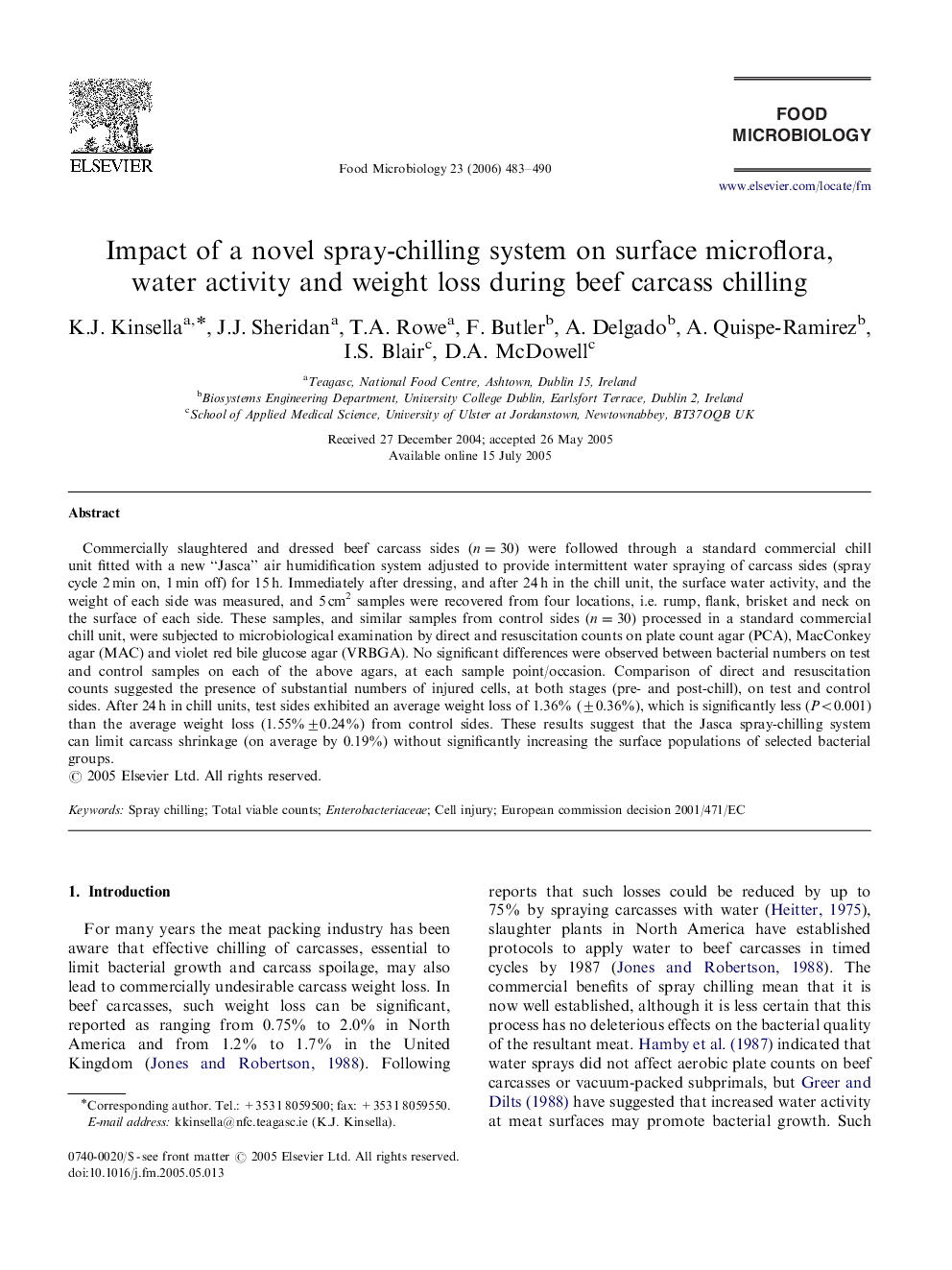| Article ID | Journal | Published Year | Pages | File Type |
|---|---|---|---|---|
| 4363565 | Food Microbiology | 2006 | 8 Pages |
Commercially slaughtered and dressed beef carcass sides (n=30n=30) were followed through a standard commercial chill unit fitted with a new “Jasca” air humidification system adjusted to provide intermittent water spraying of carcass sides (spray cycle 2 min on, 1 min off) for 15 h. Immediately after dressing, and after 24 h in the chill unit, the surface water activity, and the weight of each side was measured, and 5 cm2 samples were recovered from four locations, i.e. rump, flank, brisket and neck on the surface of each side. These samples, and similar samples from control sides (n=30n=30) processed in a standard commercial chill unit, were subjected to microbiological examination by direct and resuscitation counts on plate count agar (PCA), MacConkey agar (MAC) and violet red bile glucose agar (VRBGA). No significant differences were observed between bacterial numbers on test and control samples on each of the above agars, at each sample point/occasion. Comparison of direct and resuscitation counts suggested the presence of substantial numbers of injured cells, at both stages (pre- and post-chill), on test and control sides. After 24 h in chill units, test sides exhibited an average weight loss of 1.36% (±0.36%), which is significantly less (P<0.001) than the average weight loss (1.55%±0.24%) from control sides. These results suggest that the Jasca spray-chilling system can limit carcass shrinkage (on average by 0.19%) without significantly increasing the surface populations of selected bacterial groups.
